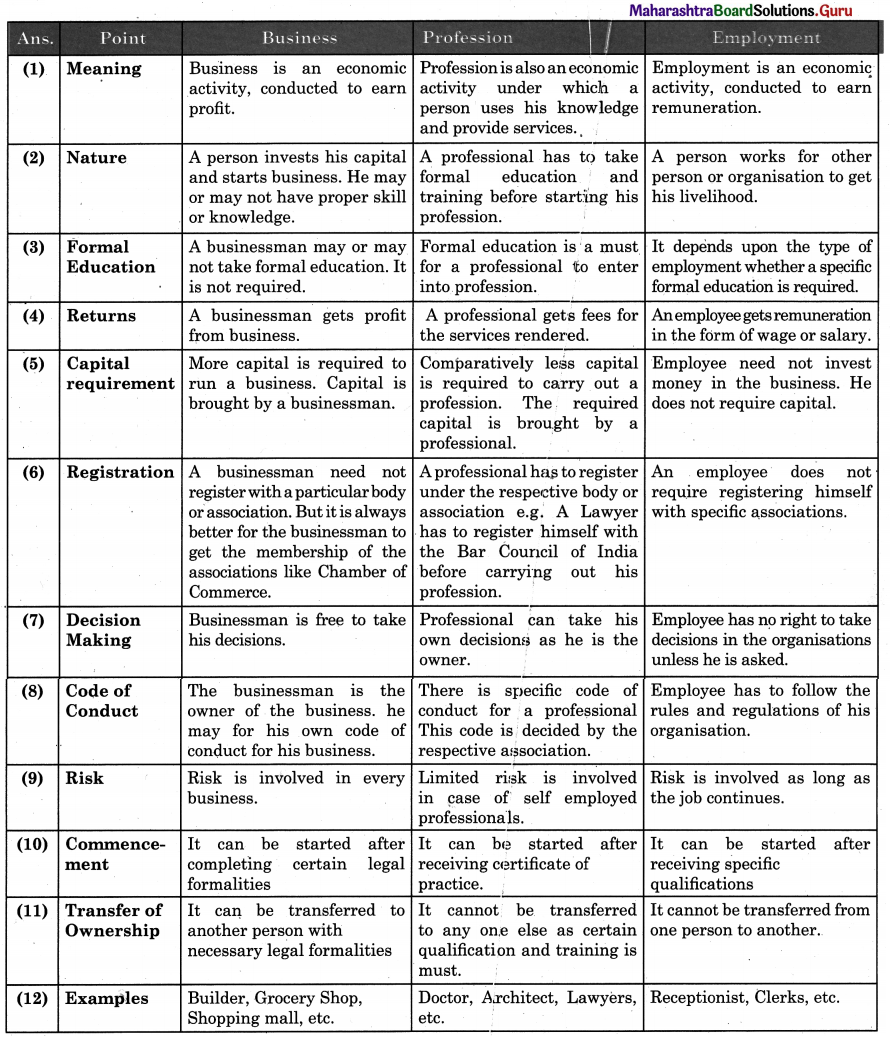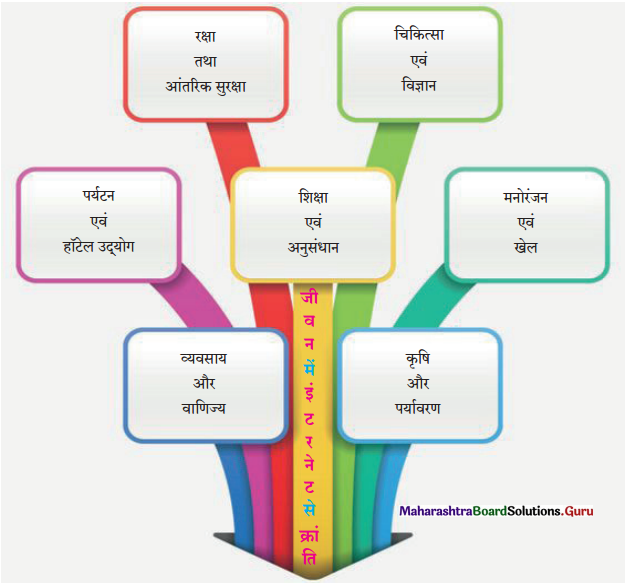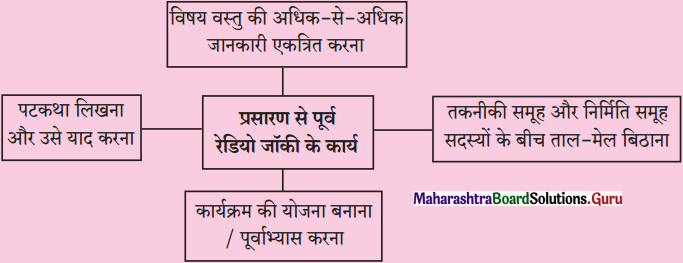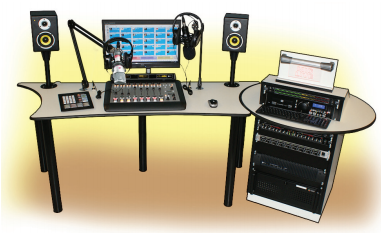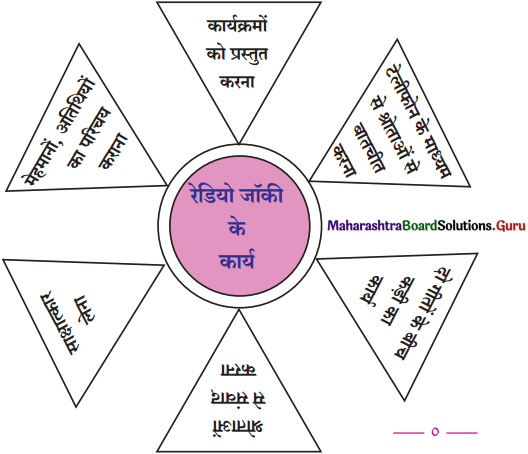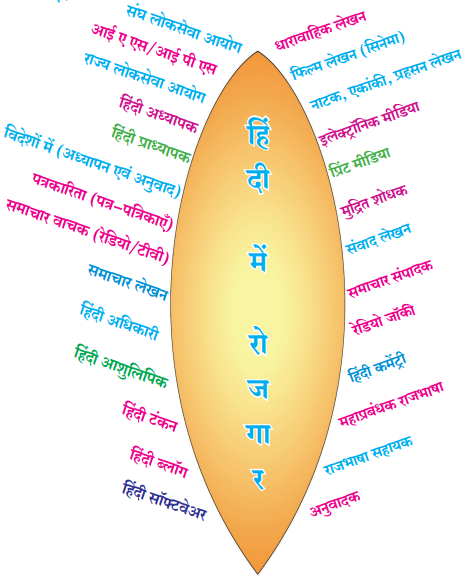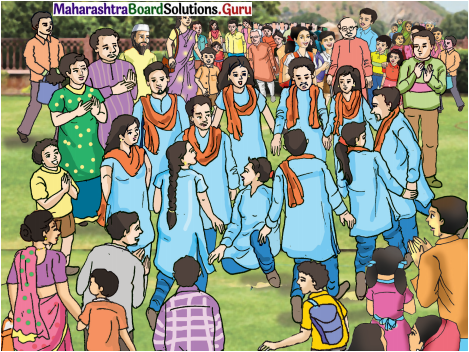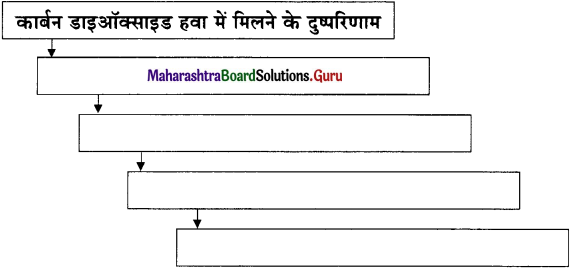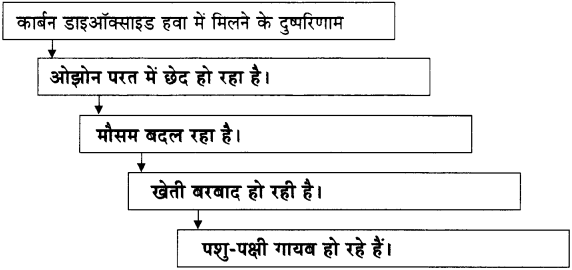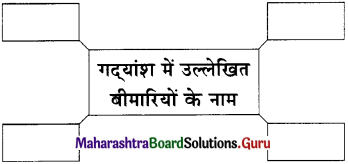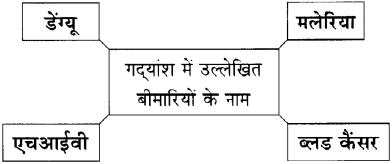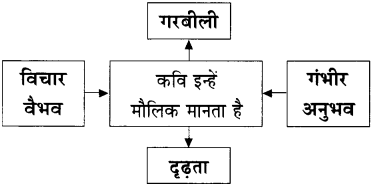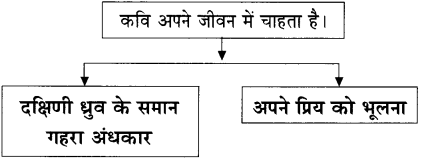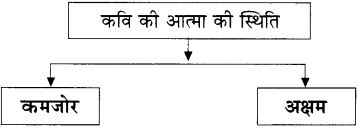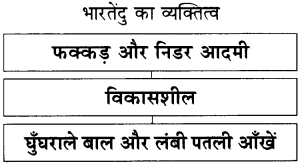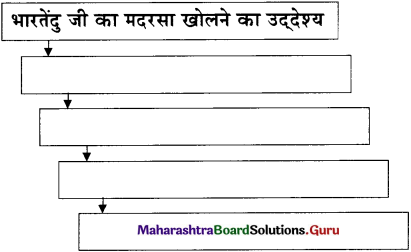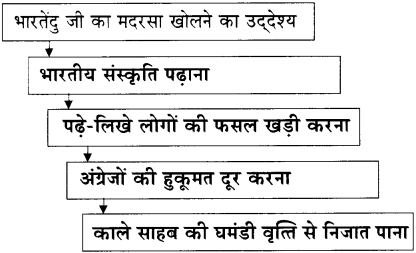Small Scale Industry and Business 11th OCM Chapter 3 Solutions Maharashtra Board
Balbharti Maharashtra State Board Organisation of Commerce and Management 11th Textbook Solutions Chapter 3 Small Scale Industry and Business Textbook Exercise Questions and Answers.
Class 11 OCM Chapter 3 Exercise Solutions
1. (A) Select the Correct option and rewrite the sentence
Question 1.
The problem of ……………….. is becoming more serious in India.
(a) employment
(b) unemployment
(c) pollution
Answer:
(b) unemployment
Question 2.
India is ………………… abundant country.
(a) labour
(b) money
(c) material
Answer:
(a) labour
Question 3.
…………….. cost of power acquisition, frequent power cuts, irregular supply of power affect the productivity of SSI.
(a) Higher
(b) Lower
(c) Average
Answer:
(a) Higher
![]()
Question 4.
Before setting up business, it is essential to study prevailing ………………. environment.
(a) business
(b) natural
(c) political
Answer:
(a) business
Question 5.
Small Scale Business are ………………… intensive.
(a) money
(b) power
(c) labour
Answer:
(c) labour
Question 6.
Occurring obscured idea in mind of entrepreneur is ……………….. stage of establishing business.
(a) first
(b) second
(c) third
Answer:
(a) first
Question 7.
Small scale industries contribute nearly ……………….. to the industrial exports of the country.
(a) 40%
(b) 60%
(c) 20%
Answer:
(a) 40%
1. (B) Match the pairs
| Group A | Group B |
| (a) Micro Manufacturing Sector | (1) Handloom |
| (b) Traditional Small Scale business | (2) Unskilled |
| (c) Registration | (3) Does not exceed Rs. 25 lakhs |
| (d) Labour | (4) 40% of exports of India |
| (e) Bicycle Parts | (5) Does not exceed Rs. 1 lakhs |
| (6) DIC | |
| (7) Marketing Problem | |
| (8) Modern Small Scale business | |
| (9) Project Appraisal | |
| (10) Cost-efficiency |
Answer:
| Group A | Group B |
| (a) Micro Manufacturing Sector | (3) Does not exceed Rs. 25 lakhs |
| (b) Traditional Small Scale business | (1) Handloom |
| (c) Registration | (6) DIC |
| (d) Labour | (2) Unskilled |
| (e) Bicycle Parts | (8) Modern Small Scale business |
1. (C) Give one word/phrase/term
Question 1.
A sector which is back bone of rural India.
Answer:
Small Scale Sector
Question 2.
An industry using power with less than 50 employees.
Answer:
Small Scale Industry
1. (D) State True or False
Question 1.
Small Scale industries should be developed in order to maintain, economic balance in a country.
Answer:
True
Question 2.
Majority Small Scale Industry uses advanced technology.
Answer:
False
![]()
Question 3.
Small business easily get access to low interest rates.
Answer:
False
Question 4.
Small business cannot survive in the competition.
Answer:
True
1. (E) Find the odd one
Question 1.
Coir, Handicraft, Spare Parts, Hand-loom
Answer:
Spare Parts
Question 2.
Bicycle Parts, Sericulture, Electronic Appliances, Sewing Machine
Answer:
Sericulture
1. (F) Complete the sentences
Question 1.
…………….. industries plays an important role in developing countries.
Answer:
Small Scale
Question 2.
SSI is …………….. largest industry which creates huge employment opportunities.
Answer:
second
Question 3.
SSI enjoys the advantage of ……………… cost of the produce.
Answer:
low
Question 4.
SSI are ……………… intensive.
Answer:
labour
Question 5.
SSI requires ………………….. capital as compared to large scale industries.
Answer:
less
Question 6.
SSI produces consumer goods as well as …………………. components.
Answer:
industrial
1. (G) Select the correct option
(Small Manufacturing Sector, Micro Manufacturing Sector, Micro Services Sector, Medium Manufacturing Sector, Small Services Sector)
| Group A | Group B |
| (1) More than Rs 25 lakhs but does not exceed Rs 5 Crores | —————- |
| (2) —————- | Does not exceed Rs 25 lakhs |
| (3) More than Rs 5 crores but does not exceed Rs 10 crores | ————— |
| (4) —————- | Does not exceed Rs 10 lakhs |
| (5) More than Rs 10 lakhs but does not exceed Rs 2 crores | —————- |
Answer:
| Group A | Group B |
| (1) More than Rs 25 lakhs but does not exceed Rs 5 Crores | Small Manufacturing sector |
| (2) Micro Manufacturing sector | Does not exceed Rs 25 lakhs |
| (3) More than Rs 5 crores but does not exceed Rs 10 crores | Medium Manufacturing sector |
| (4) Micro Services Sector | Does not exceed Rs 10 lakhs |
| (5) More than Rs 10 lakhs but does not exceed Rs 2 crores | Small Services Sector |
1. (H) Answer in one sentences
Question 1.
What is SSI?
Answer:
Traditionally the industries in India which are organised on a Small Scale and produces goods with the help of machines, labour and power are considered as Small Scale Industries.
![]()
Question 2.
State the example of Traditional Small Scale Industry.
Answer:
Hand-loom, Handicraft, Coir, Sericulture, Khadi and Village Industries are the examples of Traditional Small Scale Industries.
Question 3.
Give examples of Modern Small Scale Industry.
Answer:
Bicycle Parts, Sewing Machines, Blades, Razors, Electric Appliances, Spare Parts are examples of Modern Small Scale Industries.
1. (I) Correct the underlined word and rewrite the following sentences.
Question 1.
The problem of employment has been becoming more serious in India.
Answer:
The problem of unemployment has been becoming more serious in India.
Question 2.
India is material abundant country.
Answer:
India is labour abundant country.
Question 3.
Small scale Industry uses advanced technology.
Answer:
Small scale Industry uses outdated technology.
Question 4.
SSI begin with large amount of capital.
Answer:
SSI begin with small amount of capital.
Question 5.
Business proposal is the first step in setting up of a small scale business.
Answer:
Decision of Business area is the first step in setting up of a small scale business.
1. (J) Arrange in proper order.
(a) Selection of a place
(b) Selection of a product
(c) Business proposal
(d) Selection of technology
Answer:
(a) Selection of a product
(b) Selection of a place
(c) Selection of technology
(d) Business proposal
2. Explain the following terms/concepts.
Question 1.
Small Scale Industry.
Answer:
Any Industrial Unit is regarded as Small Scale Industry, if the following condition is satisfied.
“Investment in fixed assets like plant and equipment either held on ownership terms or on lease or hire purchase should not be more than Rupees one crore. However, the unit in no way can be owned or controlled or auxiliary for any other industrial unit.”
![]()
Question 2.
Service Sector.
Answer:
According to MSMED on the basis of investment Micro Service Sector ‘does not exceed Rs 10 lakhs’, Small Service Sector, ‘more than 10 lakhs but does not exceed 2 crores’ and Medium Service Sector ‘more than Rs 2 crores but does not exceed Rs 5 crores’.
Question 3.
Micro Small Scale Business.
Answer:
Micro small scale business is classified as Manufacturing sector and Services Sector. According to MSMED, Micro Manufacturing sector does not exceed Rs 25 lakhs and Micro Services sector does not exceed Rs 10 lakhs.
Question 4.
Traditional Industrial Sector.
Answer:
Small Scale Industries are further classified as Traditional Small Scale Industries and Modern Small Scale Industries. Handloom, Handicraft, Coir, Sericulture, Khadi and Village Industries are the examples of traditional SSI Industries.
Question 5.
Modern Industrial Sector.
Answer:
Small Scale Industries are further classified as Traditional Small Scale Industries and Modern Small Scale Industries. Bicycle Parts, Sewing Machines, Blades, Razors, Electric Appliances, Spare Parts are the examples of Modern Small Scale Industries.
3. Study the following case/situation and express your opinion.
1. Mr. Ram wants to start Small Scale business of manufacturing parts of bicycle or machinery.
Question 1.
Identify the first step or stage of setting up his Small Scale business.
Answer:
Ram has to first decide whether the setup will be corporation, proprietorship or partnership. He has to identify his strength and weaknesses which can help him to decide what type of business would be most suitable. He has to study the amount of capital requirement needed to start his business. Once he gets the idea of total capital requirement he can decide what type of business to start.
Question 2.
State the different ways of raising the capital for his business.
Answer:
If Ram decides to start as proprietorship than he has to raise all the capital by himself. He can get it from his own savings or borrow money form bank, financial institutions. He can also study the different government schemes and raise capital through those schemes.
If Ram decides to start partnership firm than he will have to find a person who is ready to invest in his partnership firm as well as he has knowledge about manufacturing parts of bicycle. They can raise capital by investing their savings, borrowing through financial institutions and friends. They can also take help from various government schemes and institutions set-up to help SSI.
If Ram decides to start corporation i.e. Pvt. Ltd. Company than he can raise capital by issuing equity shares privately. He has to sell the shares to his friends and relatives. He can also study of various government schemes and raise capital through those schemes. Ram can also borrow money from bank, financial institutes, etc. He can also accept deposits from public in the further stage of his business.
![]()
Question 3.
‘Marketing is a necessary step of running a business.’ Comment on it.
Answer:
Goods are ultimately manufactured for consumers. There is competition among many manufacturers and traders to sale goods in the market.
Without selling the goods, manufacturer cannot earn profit. Profit is main motto of business.
To sale goods in market, advertising and publicity is required. To make your brand image in market, advertising with quality of goods is required. Branded goods are easily sold in the market. Marketing can be done through many ways like TV, Radio, Bill Boards, Internet, Websites, Salesman, etc.
Thus, marketing is a necessary step of running a business.
4. Answer in brief.
Question 1.
State any four points of importance of Small Scale Industry/Business.
Answer:
Importance of Small Scale Industry:
Job Opportunities
Regional Balance
Maximum use of Natural Resources
Reduces Migration
1. Job Opportunities : SSI is second largest industry which creates huge employment opportunities, because it can be operated with minimum amount of capital. SSI can be run with basic and potential skills. This is a boost for a labour surplus country like India.
2. Regional Balance : In India, all regions are not developed due to lack of industrialization. SSI can be setup with minimum amount of capital. Small industries manufactures product using simple technologies, local available resources, material and labour. Thus, they contribute significantly to the balanced development of the country.
3. Maximum use of Natural Resources : Small scale industries are labour intensive. They utilize available natural resources and raw materials from local areas. Such use of local natural resources minimizes the cost of production which result into reasonable price of goods.
4. Reduces Migration : Small Scale industries can create a large number of employment in rural area. SSI is also a best example of self-employment. Therefore, migration of people from rural to urban can be reduced or minimized.
Question 2.
Write any four advantages of Small Scale Industry.
Answer:
Advantages of Small Scale Industries:
1. Large Employment
2. Less Capital Requirement
3. Contribution to Export
4. Opportunities for Entrepreneurship
1. Large Employment: Small Scale Industries has huge potential to create employment opportunities. They are labour intensive and use more labour than other factors of production. Their gestation period is also low and can provide employment opportunities to large number of people.
2. Less Capital Requirement : SSI requires less capital as compared to large scale industries. SSI can be started by small entrepreneurs with limited capital resources.
3. Contribution to Export : Nearly 40% of the industrial exports are contributed by SSI. Product such as hosiery, knitwear, gems and jewellery, handicraft, coir products, woolen garments, processed food, chemical and allied products and a large number of engineering goods contribute substantially to India’s exports. Products produced by SSI are used in the manufacturing of products by large scale industries which are exported. It contributes directly and indirectly to exports and helps to earn valuable foreign exchange.
4. Opportunities for Entrepreneurship : Small Scale Industries provide opportunities for entrepreneurs with limited capital as it requires less capital and lower investment in technology and machines as compared to large scale enterprises. Therefore, small entrepreneurs can start small scale industries easily.
Question 3.
State any four challenges before Small Scale Industries.
Answer:
Challenges before Small scale industries:
- Inadequate Finance
- Problem of Raw Material
- Labour Problem
- Marketing Problem
1. Inadequate Finance : SSI generally begins with a small amount of capital. Many of the units in the small sector raise funds from capital market. These units frequently suffer from lack of adequate working capital.
2. Problem of Raw Material : Another major problem of Small Scale Industries is inadequate supply of raw materials. Due to that SSI have to compromise on the quantity and quality of raw material, or pay more, price for good quality of raw material.
3. Labour Problem : Small industries generally appoint unskilled and semi skilled worker on daily wages, This creates the problem of low labour productivity, higher absenteeism and poor job commitment. The wages are low due to financial limitations. This leads to labour dissatisfaction and increase the problem of labour turnover. Improper shifts and lack of job security makes employment in small industries unattractive and the talented work force does not opt for such job.
4. Marketing Problem : Marketing is a weaker part of small industries. SSI have to depend excessively on middlemen who at times exploit them by paying low prices and delayed payments. Further, direct marketing may not be feasible for small business firms as they lack the necessary infrastructure.
5. Justify the following statements.
Question 1.
Generally Small Scale Industries are sick.
Answer:
- There are many problems faced by Small Scale Industries. These problems may be internal problems or external problems.
- Internal Problems are like unskilled labour or untrained labour, lack of managerial skills and marketing skills, lack of modernisation, etc.
- External problems like shortage of working capital, inadequate loans, delayed payments, shortage of raw material, etc.
- According to RBI a sick unit is that which has incurred a cash loss for one year, is likely to continue it for current year as well as following year.
- Thus, mainly due to financial problem, industrial units are unable to sustain themselves and are called as sick units.
![]()
Question 2.
Small Scale Industry require less amount of capital.
Answer:
- The production of Small Scale Industries is less.
- General unskilled labours are employed.
- As production is less raw material requirement is also less.
- In a place like India, where capital formation is low, small business is suitable.
- Due to small in size, such form of business can easily adapt to changing atmosphere. This promotes flexibility. It can easily change their working style without much loss as compared to large businesses.
- Thus, SSI requires less amount of capital.
Question 3.
Small Scale Industries have problems.
Answer:
Small scale industries have to face many problems:
- Lack of Adequate Finance : Due to small scale of production and sale, Banks and Financial Institutions are afraid to give loans.
- Problem of Raw material : Due to inadequate finance they cannot purchase raw material at a time. Thus, the cost of raw material increases.
- Labour Problem : Due to inadequate finance, they cannot employ skilled labour which affects the production.
- Marketing Problem: The goods manufactured if not marketed properly can be risky as it will affect the sales,
- Problem of Transport: Transportation cost increases the cost of the product which hampers the sale as large scale industries cost may be less.
- Sickness : Due to financial problem industrial units are unable to sustain themselves and finally turn to sick units.
- Thus, Small Scale Industries have problems
6. Attempt the following.
Question 1.
Explain the meaning of Small Scale Industries.
Answer:
Small Scale Industries are those industries where fixed assets i.e. plant and machinery which is owned or hired or taken on lease basis, does not exceed more than one crore.
MSMED has classified Small Scale Industries into Manufacturing sector and Services sector, and further into three categories of business i.e. Micro business, Small business and Medium business.
Subsequently over a period of time, a new definition was introduced by MSMED Act, 2006 (Micro Small and Medium Enterprises Development) is as follows
(A) Manufacturing Enterprises:
- A micro enterprise, where the investment in plant and machinery is less than Rs 25 lakh.
- A small enterprise, where the investment is more than Rs 25 lakh but less than Rs 5 crore.
- A medium enterprise, where the investment in plant and machinery is more than Rs 5 crore but less than Rs 10 crore.
(B) Service Enterprises:
- A micro enterprise, where the investment in equipment is less than Rs 10 lakh.
- A small enterprise, where the investment in equipment is more than Rs 10 lakh but less than Rs 2 crores.
- A mediuiri enterprise where the investment in equipment is more than Rs 2 crore but less than Rs 5 crores.
- An industrial unit can be categorised as small business if it fulfills the above capital investment criteria.
Question 2.
State importance of small business.
Answer:
Following are the importance of Small Business:
(i) Supply of Raw Materials to Large Industries : Finished goods of Small Scale Industries is raw material – for large scale industries. E.g., head lights supplied to automobile industries. Small Scale Industries supply raw materials to large scale industries and they get easy market available to their product.
(ii) Balanced Development between Rural and Urban Areas : With the help of locally available raw materials and labour, more and more Small Scale Business can be started in rural areas. This helps to reduced regional imbalance between urban and rural areas.
(iii) Opportunities to Young Generation : Young generations by using their creative skills make product unique in the market. Small scale business gives an opportunity to youngster to show their creativity and abilities to prove themselves and achieve success in development.
(iv) Large Employment : India is second largest populated country after China, which faced problem of unskilled and semi skilled labour. Small Scale Industries operate with more labour and less capital, which can accommodate more man power to solve employment problem.
(v) Utilisation of Domestic Resources : Small farmers can start their own unit of small industry by using locally available raw materials. He can get self employment and involve his family members too.
Question 3.
Explain in brief the impact of capital, on Small Scale industries.
Answer:
Major problem faced by small scale industries is insufficient capital, which creates following difficulties with them.
(i) Borrowings of Capital from Landlords and Money Lenders : Nationalised and Co-operative banks are not ready to finance Small Scale Industries without security. Thus, they are forced to borrow from money lenders, where they have to pay very high rate of interest.
(ii) Storage of Raw material: Small Scale Industries are agro based. Raw material is available seasonally. To stock goods they required huge finance. Due to lack of finance, they run industry only in seasons.
(iii) Lack of Skilled Labour : Only unskilled and semi skilled labourer are available. Small Scale Industries cannot afford labour cost of skilled labourer which affect quality and quantity of production and profitability.
(iv) Outdated technology : Due to insufficient capital, production methods used by SSI are old, which results in poor quality and quantity of output.
(v) Weaker Marketing Skill : In todays world marketing plays an important role. Rural area is facing marketing problem due to lack of facilities and knowledge and they are exploited by middlemen too.
![]()
Question 4.
State the problem faced by Small Scale industries.
OR
Explain in detail the challenges faced by Small Scale Industries.
Answer:
Problems faced by Small Scale Industries:
(i) Outdated Technology : Traditional methods of productions are used due to lack of finance and knowledge about latest technology. This results in poor quality of production with low output.
(ii) Problems of Infrastructure: Problems of infrastructure faced by small business are power cuts, improper transport facility, problem like congestions, bottlenecks, strikes, rise in freight charges, inadequate space, bad repair of premises, unsuitable location, high rent, etc. These problems definitely affects smooth working of small business.
(iii) Underutilization of Capacity : Small Scale Industries cannot utilize optimum resources and capacity due to lack of marketing skills, lack of demand, etc. This lead to increase the cost of product and wastage of resources.
(iv) Lack of Capital: Nationalised and Co-operative banks are not ready to provide finance without securities. Owners of Small Scale Industries don’t have any option other than borrowings funds from landlords and money lenders where they have to pay very high rate of interest.
(v) Problem of Skilled Labourers : Mostly unskilled and semi skilled labourers are available to Small Scale Industries as they cannot afford the wages to highly skilled labourer. This affect quality and quantity of output which result in less price for sales.
Question 5.
Explain the role of Small Scale Industries in employment generation.
Answer:
Small Scale Industries play very important role in generation of employment as follows:
- Small Scale Industries are Labour Intensive : There is shortage of capital with small scale industries. They are labour intensive. They use more man power than machines, they creates more opportunities for rural employment.
- Employment to Unskilled and Semiskilled Labourer : Small Scale Industries are using old and traditional method of production where they need unskilled and semi-skilled labourer.
- Employment of Rural Land Less Labourer : Small Scale Industries are set-up in rural areas. They provide employment to local labourers. They have potential to create opportunities to large scale employment to mass population in villages.
- Decrease in Migration of Labourers : Migration means movement of labourers from village to city in search of job. Due to increase in small scale industries in village areas migration of labour is reduced. Labourers are getting good employment at their own villages.
7. Answer the following
Question 1.
Explain the challenges before Small business.
Answer:
Small scale business are playing very important role in development of developing countries. They faced following challenges / difficulties:
(i) Problems of Marketing : Small business organizations depend excessively on middlemen who many times exploit them by paying low price and delayed payment. Further direct marketing may not be possible for them as they lack necessary infrastructure. Major marketing problem are lack of advertising, non-branding of products, poor quality, transportation problem, local difficulties, competition, etc.
(ii) Infrastructural Problem : Problems of infrastructure faced by small business are power cuts, improper transport facility, problem like traffic congestions, bottlenecks, strikes, rise in freight charges, inadequate space, bad repair of premises, unsuitable location, high rent, etc. These problems definitely affects smooth working of small business.
(iii) Credit and Finance : Lack of finance is the major problem faced by small business. Artisans or Craftsmen running cottage industry take credits from mahajans or traders who charge large amount of interest from them. For small scale industries, institutional source of finance (e.g. banks) is also available, but the funds allocated to this sector are inadequate.
(iv) Delayed Payment: They face problem of delayed payment by large firms and Government departments.
(v) Sickness Problem: According to RBI a sick unit is that which has incurred a cash loss for one year, is likely to continue it for current year as well as following years and unit has an imbalance in financial structure. Sickness is generally seen in small business industries like cotton, jute, sugar, textile, etc. Internal causes of sickness are lack of skill labour, faulty planning, problem of recovery, etc. External causes of sickness are shortage of capital, inadequate loans, shortage of raw material, etc. However, rehabilitation of sick unit is a costly affair.
(vi) Personal Problems : Personal problems like spending long hours to work and less time with family and the rewards have not been favourable.
(vii) Shortage of Raw Material : Shortage of raw material often take place due to reasons like natural calamities, transport problem, industrial strikes, poor quality of raw material, exploitation done by traders, etc. Traders or agents who supply raw material often exploit the owner by charging higher prices. They also insist on buying finished products at lower rate. Thus, small business owners are subject to double exploitation.
(viii) Outdated Technology : Use of low-grade technical know-how and skills have resulted in low productivity in small business industries. Many units in small business make use of primitive methods of production, this leads to increase in cost of production, whereas productivity is low. Small units often do not care about the changing tastes and fashions of customers.
(ix) Underutilization of Capacity : Small business units cannot utilize optimum resources and capacity due to lack of marketing skills, lack of demand, they work below full capacity, etc. This lead to increase the cost and wastage of resources.
(x) Labour Problem : It includes highly demanding employees, absenteeism, lack of skilled workers and transportation of workers, strikes, high wage rates, inefficiency, etc.
![]()
Question 2.
Write down the benefits or advantages of small business.
Answer:
Small scale business plays very important role in the economic development of the country.
The following are the benefits or advantages of small business:
(i) Cost Savings : Small scale business used micro production method which results into quality product at low cost of production. Production cost of small business is much more less compared to large scale industries due to low cost of operation.
(ii) Adaptability : Small scale business can change themselves as per the market requirement. They can change product, line of product as per market changes, like fashions, new product, demand, etc.
(iii) Limited Capital : As small business is labour intensive they requires very small amount of capital for plant and equipments.
(iv) Low Gestation Period : To start a new business requires very short period as compared to large scale industries. Small scale business can start production of good in very short period of time and can increase the scale of production.
Labour Intensive : Small business units use less machines and more labours. Absorption of local labour helps to solve problem of absolute poverty and control inequality of income.
(vi) Opportunities to Rural Youth : New generation youth has smart creativity. With available technology and raw materials, rural youth can start their own business unit. Small business unit plays very important role in developing countries.
(vii) Upliftment of Economy : Majority of small scale business used traditional method of productions. Rural craftsman and artisans do have their own talents and skills which they have learnt from their forefathers. Such products are very much demanded in market which results in high income.
(viii) Decentralised Economy : Small scale business prevents concentration of economic power in the few hands. Income is divided equally among large number of people.
(ix) Export Earning : Small business contributes remarkable to country’s export. 40% of India’s exports are contributed by small business like textiles, handicraft, handloom, embroidery, etc.
(x) Regional Balance : There is wide gap between urban and rural India. Small scale business helps to reduce gap between developed and underdeveloped or developing areas.
Question 3.
Explain the process of establishment of Small Scale Industries.
Answer:
In todays world, youth are more attracted towards business opportunities rather than employment.
To start a small scale industries following stages to be followed:
(i) Idea to Setup a Business : This is a first step to start a small scale industry. The prospective entrepreneur with his own capacity decide the sized and type of business like sole proprietorship, partnership or corporation.
(ii) Analysis of Business Surrounding : It is necessary to understand different business surrounding and policies before starting any business. They are competitors, legal, economical, industrial, technological, etc.
(iii) Choice of Product : Entrepreneurs has to decide his sector of production i.e. Manufacturing or Service sector. After doing market survey and understanding advantages and disadvantages one should decide line of product or services.
(iv) Location for Business : Entrepreneur has to select location to start business. It plays very important role in success of business while selecting location many factors are to be taken into consideration like availability of labour, raw materials, power supply, transportation, etc.
(v) Technology Selection : An entrepreneur has to select available and suitable technology for his business. He should select technology he is familiar to use.
(vi) Project Appraisal : It means the study and assessment of a project. One should study the project very carefully from the point of view regards to economy, finance, marketing and profitability.
(vii) Capital Requirement : The entrepreneur has to plan for capital requirement and sources available for capital. It can be self finance, loan from relatives or banks.
(viii) Incorporation / Registration : It is compulsory for every small scale industry to registered with the respective Government Authorities. A printed application form is available with District Industries Centre (DIC). Entrepreneur has to duly filled the information with his signature in the form and submit to DIC.
(ix) Implementation of Resources : After registration of business entrepreneur has to start with production process:
- Financial Resources : The entrepreneur has to collect finance and make necessary arrangement for capital.
- Factor Set up : The entrepreneurs has to allocate space for various operations, purchase of machinery and tools and installation of it.
- Electric power and water supply : The entrepreneur has to calculate total electric power requirement in KW (Kilowatt) and get connection from the authority and supply for water connection.
- Appointment of staff : Small scale industries are labour, intensive. One has to appoint unskilled and semi-skilled staff as per requirement to start production.
(x) Manufacturing and Selling of Product : After assembling all financial and physical resources goods are manufactured and send to market for sale. Advertising and publicity plays very important role in marketing and selling of product.
(xi) Customer’s Feedback : Customer satisfaction is very important in business. Regular feedback from customers is helping to make qualitative changes in product.
Question 4.
Explain the importance of small business.
Answer:
Following are the importance of Small Business:
(i) Supply of Raw Materials to Large Industries : Finished goods of Small Scale Industries is raw material – for large scale industries. E.g., head lights supplied to automobile industries. Small Scale Industries supply raw materials to large scale industries and they get easy market available to their product.
(ii) Balanced Development between Rural and Urban Areas : With the help of locally available raw materials and labour, more and more Small Scale Business can be started in rural areas. This helps to reduced regional imbalance between urban and rural areas.
(iii) Opportunities to Young Generation : Young generations by using their creative skills make product unique in the market. Small scale business gives an opportunity to youngster to show their creativity and abilities to prove themselves and achieve success in development.
(iv) Large Employment : India is second largest populated country after China, which faced problem of unskilled and semi skilled labour. Small Scale Industries operate with more labour and less capital, which can accommodate more man power to solve employment problem.
(v) Utilisation of Domestic Resources : Small farmers can start their own unit of small industry by using locally available raw materials. He can get self employment and involve his family members too.
Question 5.
It is clear that the absence of capital and raw material is the main reason for the short term sickness. Explain it.
Answer:
Industrial sickness means the industry which has financial losses over period of time. Short term sickness is a temporary phenomenon.
Followings are the main capital and raw material reasons for short term sickness:
Financial / Capital:
(i) Non availability of Finance from Banks : Nationalised and Co-operative banks are not ready to finance SSI as there is less possibility of recovery of loans. Banks demand securities against loans, which is difficult to arrange for the small businessman.
(ii) Loans from Money lenders : As bank finance is difficult to raise, small businessman borrow capital from money lenders who charged very high rate of interest.
(iii) Shortage of Working Capital : Majority of small scale industries are depend on local source of raw material which is seasonal. They have to buy large quantity of raw materials to be used through out the years which needs large finance.
(iv) Unawareness of various Government Schemes : Due to lack of awareness among the owners of SSI about various Government Scheme for capital marketing, subsidies, etc. suffer capital problems.
![]()
Raw Material:
(i) Local source of raw material : Majority of small scale industries are depends on local supply of raw materials. Local suppliers of raw materials make artificial scarcity for supply of raw materials which make increase in product cost for the businessman.
(ii) Seasonal supply of raw materials : Small scale industries are using local supply of raw materials. The supply of raw material is seasonal. They don’t have huge capital to stock large quantity of raw materials due to this they have to stop production of goods after season ends and face problem of short term sickness.
(iii) Shortage of raw material : There may be short supply of raw materials due to natural calamities, transport strike, etc. affect the running of small scale industries.
(iv) Poor quality of raw material : There is no grading or standardizing of raw materials supply to small scale industry. This affect product quality and quantity.
OCM 11th Commerce Textbook Solutions Digest
- 11th OCM Chapter 1 Practical Problems
- 11th OCM Chapter 2 Practical Problems
- 11th OCM Chapter 3 Practical Problems
- 11th OCM Chapter 4 Practical Problems
- 11th OCM Chapter 5 Practical Problems
- 11th OCM Chapter 6 Practical Problems
- 11th OCM Chapter 7 Practical Problems
- 11th OCM Chapter 8 Practical Problems
